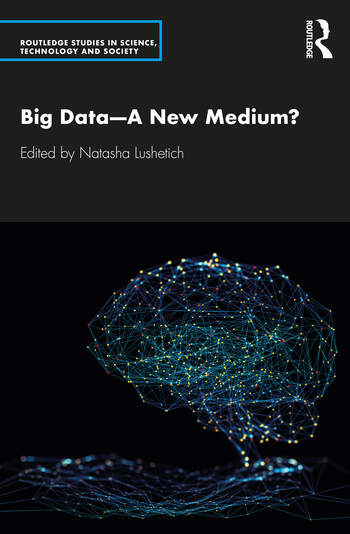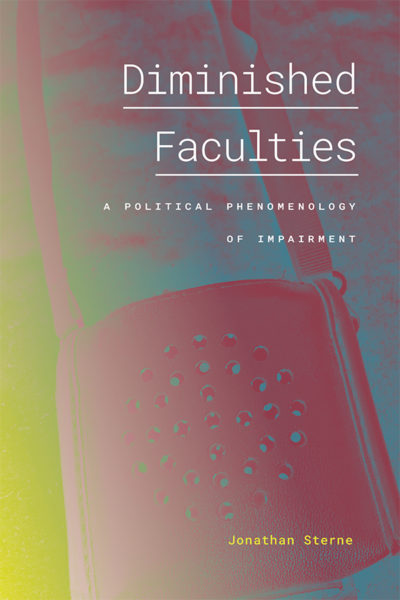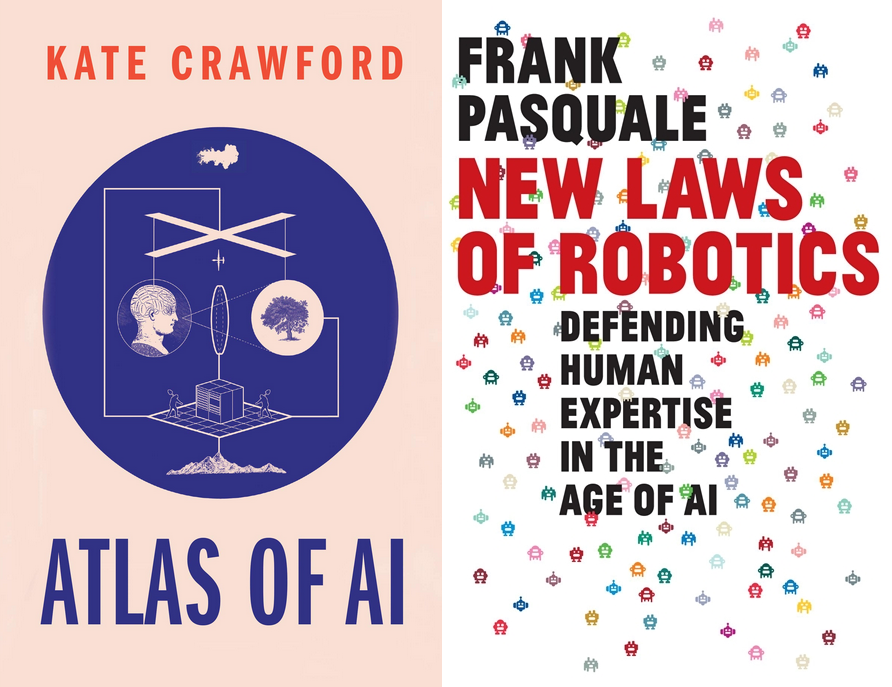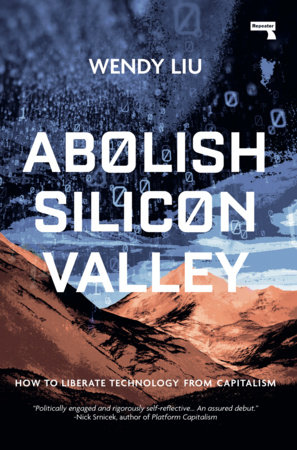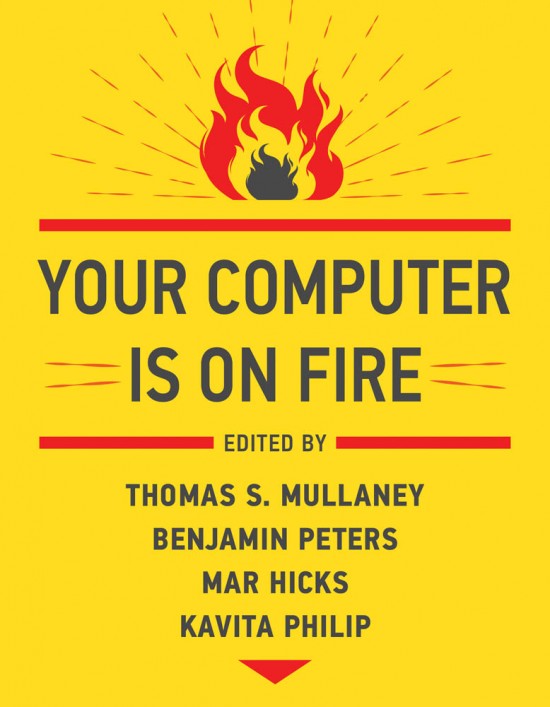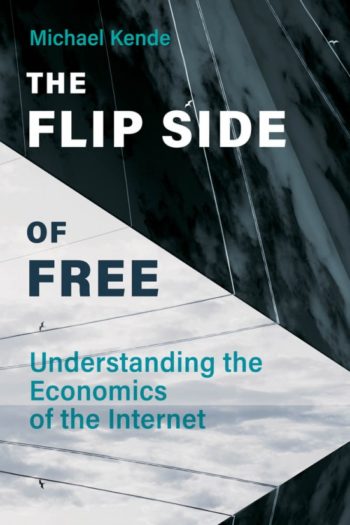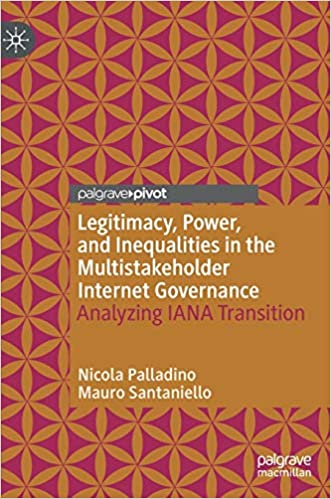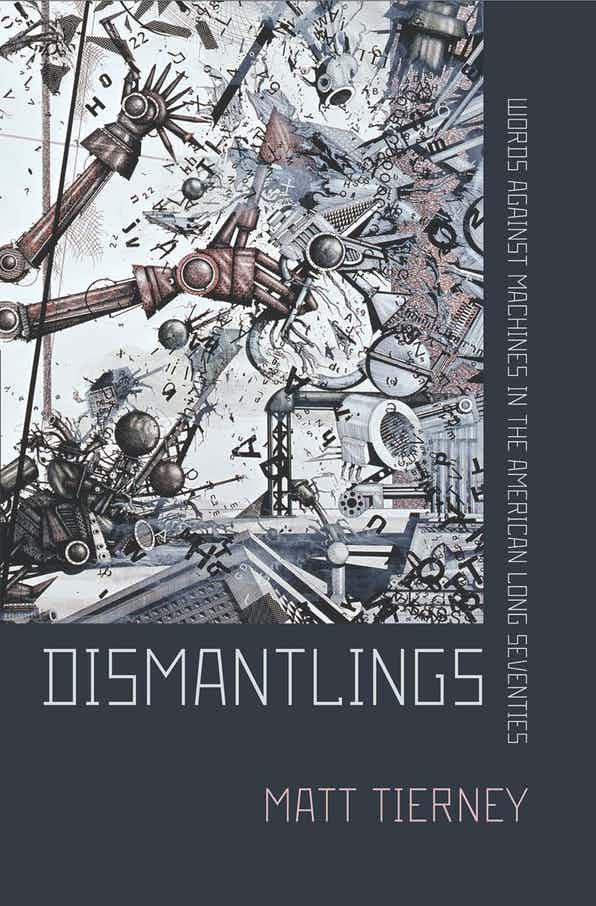a review of Anna Wiener, Uncanny Valley; Joanne McNeil, Lurking; Ellen Ullman, Life in Code; Wendy Liu, Abolish Silicon Valley; Ben Tarnoff and Moira Weigel, eds., Voices from the Valley; Mary Beth Meehan and Fred Turner, Seeing Silicon Valley
by Tamara Kneese
“Fuck all that. I have no theory. I’ve only got a story to tell.”
– Elizabeth Freeman, “Without You, I’m Not Necessarily Nothing”
~
Everyone’s eager to mine Silicon Valley for its hidden stories. In the past several years, women in or adjacent to the tech industry have published memoirs about their time there, ensconcing macrolevel critiques of Big Tech within intimate storytelling. Examples include Anna Wiener’s Uncanny Valley, Joanne McNeil’s Lurking, Ellen Ullman’s Life in Code, Susan Fowler’s Whistleblower, and Wendy Liu’s Abolish Silicon Valley, to name just a handful.[1] At the same time, recent edited volumes curate workers’ everyday lives in the ideological and geographical space that is Silicon Valley, seeking to expose the deep structural inequalities embedded in the tech industry and its reaches in the surrounding region. Examples of this trend include Ben Tarnoff and Moira Weigel’s Voices from the Valley and Mary Beth Meehan and Fred Turner’s Seeing Silicon Valley, along with tech journalists’ reporting on unfair labor practices and subsequent labor organizing efforts. In both cases, personal accounts of the tech industry’s effects constitute their own form of currency.
What’s interesting about the juxtaposition of women’s first-hand accounts and collected worker interviews is how the first could fit within the much derided and feminized “personal essay” genre while the latter is more explicitly tied to the Marxist tradition of using workers’ perspectives as an organizing catalyst, i.e. through the process of empirical cataloging and self-reflection known as workers’ inquiry.[2] In this review essay, I consider these two seemingly unrelated trends in tandem. What role can personal stories play in sparking collective movements, and does presentation matter?
*
Memoirs of life with tech provide a glimpse of the ways that personal experiences—the good, the bad, and the ugly—are mediated by information technologies themselves as well as through their cascading effects on workplaces and social worlds. They provide an antidote to early cyberlibertarian screeds, imbued with dreams of escaping fleshly, earthly drudgery, like John Perry Barlow’s “A Declaration of the Independence of Cyberspace”: “Our identities have no bodies, so, unlike you, we cannot obtain order by physical coercion.” But in femme accounts of life in code, embodiment is inescapable. As much as the sterile efficiencies of automation would do away with the body’s messiness, the body rears its head with a vengeance. In a short post, one startup co-founder, Tracy Young, recounts attempting to neutralize her feminine coded body with plain clothes and a stoic demeanor, persevering through pregnancy, childbirth, and painful breastfeeding, and eventually hiding her miscarriage from her colleagues. Young reveals these details to point to the need for structural changes within the tech industry, which is still male-dominated, especially in the upper rungs. But for Young, capitalism is not the problem. Tech is redeemable through DEI initiatives that might better accommodate women’s bodies and needs. On the other end of the spectrum, pregnant Amazon warehouse workers suffer miscarriages when their managers refuse to follow doctors’ recommendations and compel pregnant workers to lift heavy boxes or prevent them from taking bathroom and water breaks. These experiences lie on disparate ends of the scale, but reflect the larger problems of patriarchy and racial capitalism in tech and beyond. It is unclear if this sliver of common ground can hope to bridge such a gulf of privilege.
Sexual harassment, workplace misogyny, pregnancy discrimination: these grievances come up again and again within femme tech memoirs, even the ones that don’t at face value seem political. At first glance, Joanne McNeil’s Lurking: How a Person Became a User is not at all about labor. Her memoir is to some extent a celebration of the early internet, at times falling into the trap of nostalgia—the pleasure of the internet being “a place,” and the greater degree of flexibility and play afforded by usernames as opposed to real names policies. “Once I spoke freely and shared my dreams with strangers. Then the real world fastened itself to my digital life…My idle youth online largely—thankfully—evaporated in the sun, but more recent-ish old posts breeze along, colliding with and confusing new image of myself that I try to construct” (McNeil 2020, 8-9). Building on earlier feminist critiques of techno-utopian libertarianism, such as Paulina Borsook’s Cyberselfish (2000), in McNeil’s estimation, the early web allowed people to be lurkers, rather than users, even if the disembodied libertarian imaginaries attached to cyberspace never panned out. With coerced participation and the alignment of actual identities with online profiles, the shift to “the user” reflects the enclosure of the web and the growth of tech corporations, monetization, and ad tech. The beauty of being a lurker was the space to work out the self in relation to communities and to bear witness to these experimental relationships. As McNeil puts it, in her discussion of Friendster, “What happened between <form> and </form> was self-portraiture” (McNeil 2020, 90). McNeil references the many early internet communities, like Echo, LatinoLink, and Café los Negroes, which helped queer, Black, and Latinx relationships flourish in connection with locally situated subcultures.
In a brief moment, while reflecting on the New York media world built around websites like Gawker, McNeil ties platformization to her experiences as a journalist, a producer of knowledge about the tech industry: “A few years ago, when I was a contractor at a traffic-driven online magazine, I complained to a technologist friend about the pressure I was under to deliver page view above a certain threshold” (McNeil 2020, 138). McNeil, who comes from a working class background, has had in adulthood the kind of work experiences Silicon Valley tends to make invisible, including call center work and work as a receptionist. As a journalist, even as a contractor, she was expected to amass thousands of Twitter followers. Because she lacked a large following, she relied on the publication itself to promote her work. She was eventually let go from the job. “My influence, or lack thereof, impacted my livelihood” (McNeil 2020, 139). This simply stated phrase reveals how McNeil’s critique of Big Tech is ultimately not only about users’ free labor and the extraction of profit from social relationships, but about how platform metrics are making people’s jobs worse.
Labor practices emerge in McNeil’s narrative at several other points, in reference to Google’s internal caste system and the endemic problem of sexual harassment within the industry. In a discussion of Andrew Norman Wilson’s influential Workers Leaving the Googleplex video (2011), which made clear to viewers the sharp divisions within the Google workforce, McNeil notes that Google still needs these blue-collar workers, like janitors, security guards, and cafeteria staff, even if the company has rendered them largely invisible. But what is the purpose of making these so-called hidden laborers of tech visible, and for whom are they being rendered visible in the first place?[3] If you have ever been on a tech campus, you can’t miss ‘em. They’re right fucking there! If the hierarchies within tech are now more popularly acknowledged, then what? And are McNeil’s experiences as a white-collar tech journalist at all related to these other people’s stories, which often provide the scaffolding for tech reporters’ narratives?
*
Other tech memoirs more concretely focus on navigating tech workplaces from a femme perspective. Long-form attention to the matter creates more space for self-reflection and recognition on the part of the reader. In 2016, Anna Wiener’s n+1 essay, “Uncanny Valley,” went viral because it hit a nerve. Wiener presented an overtly gendered story—about body anxiety and tenuous friendship—told through one woman’s time in the world of startups before the majority of the public had caught wind of the downside of digital platforms and their stranglehold on life, work, and politics. Later, Wiener would write a monograph-length version of the story with the same title, detailing her experiences as a “non-technical” woman in tech: “I’d never been in a room with so few women, so much money, and so many people chomping at the bit to get a taste” (Wiener 2020, 61). In conversation with computer science academics and engineers, her skepticism about the feasibility of self-driving cars isn’t taken seriously because she is a woman who works in customer support. Wiener describes herself as being taken in by the promises and material culture of the industry: a certain cashmere sweater and overall look, wellness tinctures, EDM, and Burning Man at the same time she navigates taxicab gropings on work trips and inappropriate comments about “sensual” Jewish women at the office. Given the Protestant Work Ethic-tinged individualism of her workplace, she offers little in the way of solidarity. When her friend Noah is fired after writing a terse memo, she and the rest of the workers at the startup fail to stand up to their boss. She laments, “Maybe we never were a family. We knew we had never been a family,” questioning the common myth that corporations are like kin (Wiener 2020, 113). Near the end of her memoir, Wiener wrestles with the fact that GamerGate, and later the election of Trump, do not bring the reckoning she once thought was coming. The tech industry continues on as before.
Wiener is in many respects reminiscent of another erudite, Jewish, New York City-to-San Francisco transplant, Ellen Ullman. Ullman published an account of her life as a woman programmer, Close to the Machine: Technophilia and Its Discontents, in 1997, amid the dotcom boom, when tech criticism was less fashionable. Ullman writes about “tantric, algorithmic” (1997, 49) sex with a fellow programmer and the erotics of coding itself, flirting with the romance novel genre. She critiques the sexism and user-disregard in tech (she is building a system for AIDS patients and their providers, but the programmers are rarely confronted with the fleshly existence of their end-users). Her background as a communist, along with her guilt about her awkward class position as an owner and landlord of a building in the Wall Street district, also comes through in the memoir: At one point, she quips “And who was Karl Marx but the original technophile?” (Ullman 1997, 29). Ullman presciently sees remote, contracted tech workers, including globally situated call center works, as canaries in the coal mine. As she puts it, “In this sense, we virtual workers are everyone’s future. We wander from job to job, and now it’s hard for anyone to stay put anymore. Our job commitments are contractual, contingent, impermanent, and this model of insecure life is spreading outward from us” (Ullman 1997, 146). Even for a privileged techie like Ullman, the supposedly hidden global underclass of tech was not so hidden after all.
Ullman’s Life in Code: A Personal History of Technology, a collection of essays published twenty years later in 2017, reflects a growing desire to view the world of startups, major tech companies, and life in the Bay Area through the lens of women’s unique experiences. A 1998 essay included in Life in Code reveals Ullman’s distrust of what the internet might become: “I fear for the world the internet is creating. Before the advent of the Web, if you wanted to sustain a belief in far-fetched ideas, you had to go out into the desert, or live on a compound in the mountains, or move from one badly furnished room to another in a series of safe houses” (Ullman 2017, 89). Ullman at various points refers to the toxic dynamics of technoculture, the way that engineers make offhand sexist, racist remarks during their workplace interactions. In other words, critics like Ullman had been around for decades, but her voice, and voices like hers, carried more weight in 2017 than in 1997. Following in Ullman’s footsteps, Wiener’s contribution came at just the right time.
I appreciate Sharrona Pearl’s excellent review of Wiener’s Uncanny Valley in this publication, and her critique of the book’s political intentions (or lack thereof) and privileged perspective. When it comes to accounts of the self as political forces, Emma Goldman’s Living My Life it is not. But some larger questions remain: why did so many readers find Wiener’s personal narrative compelling, and how might we relate its popularity to a larger cultural shift in how stories about technology are told?
Another woman’s memoir of a life in tech offers one possible answer. Wendy Liu started as a computer science major at a prestigious university, worked as a Google intern, and co-founded a startup, not an uncommon trajectory for a particular class of tech worker. Her candid memoir of her transformation from tech evangelist to socialist tech critic, Abolish Silicon Valley, references Wiener’s “Uncanny Valley” essay. Wiener’s account resonated with Liu, even as a software engineer who viewed herself as separate from the non-technical women around her— the marketers, program managers, and technical writers. Liu is open about the ways that ideologies around meritocracy and individual success color her trajectory: she viewed Gamergate as an opportunity to test out her company’s tech capabilities and idolized men like Elon Musk and Paul Graham. Hard work always pays off and working 80 hours a week is a means to an end. Sometimes you have to dance with the devil: for example, Liu’s startup at one point considers working for the Republican Party. Despite her seeming belief in the tech industry’s alignment with the social good, Liu has doubts. When Liu first encounters Wiener’s essay, she wryly notes that she thought n+1 might be a tech magazine, given its math-y name. Once she reads it, “The words cut like a knife through my gradually waning hopes, and I wanted to sink into an ocean of this writing” (Liu 2020, 111). Liu goes on to read hundreds of leftist books and undergo a political awakening in London. While Wiener’s memoir is intensely personal, not overtly about a collective politics, it still ignites something in Liu’s consciousness, becoming enfolded into her own account of her disillusionment with the tech industry and capitalism as a whole. Liu also refers to Tech Against Trump, published by Logic Magazine in 2017, which featured “stories from fellow tech workers who were startled into caring about politics because of Trump” (Liu 2020, 150). Liu was not alone in her awakening, and it was first-hand accounts by fellow tech workers who got her and many others to question their relationship to the system.
Indeed, before Liu published her abolitionist memoir, she published a short essay for a UK-based Marxist publication, Notes from Below, titled “Silicon Inquiry,” applying the time-honored Marxist practice of workers’ inquiry to her own experiences as a white-collar coder. She writes, “I’ve lost my faith in the industry, and with it, any desire to remain within it. All the perks in the world can’t make up for what tech has become: morally destitute, mired in egotism and self-delusion, an aborted promise of what it could have been. Now that I realise this, I can’t go back.” She describes her trajectory from 12-year-old tinkerer, to computer science major, to Google intern, where she begins to sense that something is wrong and unfulfilling about her work: “In Marxist terms, I was alienated from my labour: forced to think about a problem I didn’t personally have a stake in, in a very typically corporate environment that drained all the motivation out of me.” When she turns away from Google to enter the world of startups, she is trapped by the ideology of faking it until you make it. They work long hours, technically for themselves, but without achieving anything tangible. Liu begins to notice the marginalized workers who comprise a major part of the tech industry, not only ride-hail drivers and delivery workers, but the cafeteria staff and janitors who work on tech campuses. The bifurcated workforce makes it difficult for workers to organize; the ones at the top are loyal to management, while those at the bottom of the hierarchy are afraid of losing their jobs if they speak out.
Towards the end of her memoir, Liu describes joining a picket line of largely Chinese-American women who are cleaners for Marriott Hotels. This action is happening at the same time as the 2018 Google Walkout, during which white-collar tech workers organized against sexual harassment and subsequent retaliation at the company. Liu draws a connection between both kinds of workers, protesting in the same general place: “On the surface, you would think Google engineers and Marriott hotel cleaners couldn’t be more different. And yet, one key component of the hotel workers’ union dispute was the prevalence of sexual harassment in the workplace…The specifics might be different, but the same underlying problems existed at both companies” (Liu 2020, 158). She sees that TVCs (temps, vendors, and contractors) share grievances with their full-time counterparts, especially when it comes to issues over visas, sexual harassment, and entrenched racism. The trick for organizers is to inspire a sense of solidarity and connection among workers who, on the surface, have little in common. Liu explicitly connects the experiences of more white-collar tech workers like herself and marginalized workers within the tech industry and beyond. Her memoir is not merely a personal reflection, but a call to action–individual refusal, like deleting Facebook or Uber, is not sufficient, and transforming the tech industry is necessarily a collective endeavor. Her abolitionist memoir connects tech journalism’s use of workplace grievances and a first-hand account from the coder class, finding common ground in the hopes of sparking structural change. Memoirs like these may act as a kind of connective tissue, bridging disparate experiences of life in and through technology.
*
Another approach to personal accounts of tech takes a different tack: Rather than one long-form, first-hand account, cobble together many perspectives to get a sense of contrasts and potential spaces of overlap. Collections of workers’ perspectives have a long leftist history. For decades, anarchists, socialists, and other social reformers have gathered oral histories and published these personal accounts as part of a larger political project (see: Avrich 1995; Buhle and Kelley 1989; Kaplan and Shapiro 1998; Lynd and Lynd 1973). Two new edited collections focus on aggregated workers’ stories to highlight the diversity of people who live and work in Silicon Valley, from Iranian-American Google engineers to Mexican-American food truck owners. The concept of “Silicon Valley,” like “tech industry,” tends to obscure the lived experiences of ordinary individuals, reflecting more of a fantasy than a real place.
Mary Beth Meehan and Fred Turner’s Seeing Silicon Valley follows the leftist photography tradition (think Lewis Hine or Dorothea Lange) of capturing working class people in their everyday struggles. Based on a six-week Airbnb stay in the area, Meehan’s images are arresting, spotlighting the disparity within Santa Clara Valley through a humanistic lens, while Turner’s historically-informed introduction and short essays provide a narrative through which to read the images. Silicon Valley is “a mirror of America itself. In that sense, it really is a city on a hill for our time” (Meehan and Turner 2021, 8). Through their presentation of life and work in Silicon Valley, Turner and Meehan push back against stereotypical, ahistorical visions of what Silicon Valley is. As Turner puts it, “The workers of Silicon Valley rarely look like the men idealized in its lore” (Meehan and Turner 2021, 7). Turner’s introduction critiques the rampant economic and racial inequality that exists in the Valley, and the United States as a whole, which bears out in the later vignettes. Unhoused people, some of whom work for major tech companies in Mountain View, live in vans despite having degrees from Stanford. People are living with the repercussions of superfund sites, hazardous jobs, and displacement. Several interviewees reference union campaigns, such as organizing around workplace injuries at the Tesla plant or contract security guards unionizing at Facebook, and their stories are accompanied by images of Silicon Valley Rising protest signs from an action in San Jose. Aside from an occasional direct quote, the narratives about the workers are truncated and editorialized. As the title would indicate, the book is above all a visual representation of life in Silicon Valley as a window into contemporary life in the US. Saturated colors and glossy pages make for a perfect coffee table object and one can imagine the images and text at home in a gallery space. To some degree, it is a stealth operation, and the book’s aesthetic qualities bely the sometimes difficult stories contained within, but the book’s intended audience is more academic than revolutionary. Who at this point doesn’t believe that there are poor people in “Silicon Valley,” or that “tech labor” obscures what is more often than not racialized, gendered, embodied, and precarious forms of work?
A second volume takes a different approach, focusing instead on the stories of individual tech workers. Ben Tarnoff and Moira Weigel, co-founders of Logic Magazine, co-edited Voices from the Valley as part of their larger Logic brand’s partnership series with FSG Originals. The sharply packaged volume includes anonymous accounts from venture capitalist bros as well as from subcontracted massage workers, rendering visible the “people behind the platform” in a secretive industry full of NDAs (Tarnoff and Weigel 2020, 3). As the book’s title suggests, the interviews are edited back-and-forths with a wide range of workers within the industry, emphasizing their unique perspectives. The subtitle promises “Tech Workers Talk About What They Do—And How They Do It.” This is a clear nod to Studs Terkel’s 1974 epic collection of over one hundred workers’ stories, Working: People Talk About What They Do All Day and How They Feel About What They Do, in which he similarly categorizes them according to job description, from gravedigger to flight attendant. Terkel frames each interview and provides a description of their living conditions or other personal details, but for the most part, the workers speak on their own terms. In Tarnoff and Weigel’s contribution, we as readers hear from workers directly, although we do catch a glimpse of the interview prompts that drove the conversations. The editors also provide short essays introducing each “voice,” contextualizing their position. Workers’ voices are there, to be sure, but they are also trimmed to match Logic’s aesthetic. Reviews of the book, even in leftist magazines like Jacobin, tend to focus as much on the (admittedly formidable) husband and wife editor duo as they do on the stories of the workers themselves. Even so, Tarnoff and Weigel emphasize the political salience of their project in their introduction, arguing that “Silicon Valley is now everywhere” (2020, 7) as “tech is a layer of every industry” (2020, 8). They end their introduction with a call to the reader to “Speak, whoever you are. Your voice is in the Valley, too” (Tarnoff and Weigel 2020, 8).
As in Meehan and Turner’s visually oriented book, Tarnoff and Weigel’s interviews point to the ways that badge color as class marker, along with gender, immigration status, disability, and race, affect people’s experiences on the job. Much like Meehan and Turner’s intervention, the book gives equal space to the most elite voices as it does to those on the margins, spanning the entire breadth of the tech industry. There are scattered examples of activism, like white collar organizing campaigns against Google’s Dragonfly and other #TechWontBuiltIt manifestations. At one point, the individual known as “The Cook” names Tech Workers Coalition. TWC volunteers were “computer techie hacker cool” and showed up to meetings or even union negotiations in solidarity with their subcontracted coworkers. The Cook notes that TWC thinks “everybody working for a tech company should be part of that company, in one sense or another” (Tarnoff and Weigel 2020, 68). There is an asterisk with a shorthand description of TWC, which has become something of a floating signifier of the tech workers’ movement. The international tech workers labor movement encompasses not only white collar coders, but gig and warehouse workers, who are absent here. With only seven interviews included, the volume cannot address every perspective. Because the interviews with workers are abbreviated and punctuated by punchy subheadings, it can be hard to tell whose voices are really being heard. Is it the workers of Silicon Valley, or is it the editors? As with Meehan and Turner’s effort, the end result is largely a view from above, not within. Which isn’t to say there isn’t a place for this kind of aggregation, or that it can’t connect to organizing efforts, but is this volume more of a political work than Wiener’s or Ullman’s memoirs?
In other interviews, workers reveal gendered workplace discrimination and other grievances that might prompt collective action. The person identified as “The Technical Writer” describes being terminated from her job after her boss suspects her pregnancy. (He eliminates the position instead of directly firing her, making it harder for her to prove pregnancy discrimination). She decides not to pursue a lawsuit because, as she puts it, “Tech is actually kind of a small industry. You don’t want to be the woman who’s not easy to work with” (Tarnoff and Weigel 2020, 46). After being terminated, she finds work as a remote contractor, which allows her to earn an income while caring for her newborn and other young child. She describes the systemic misogyny in tech that leads to women in non-technical roles being seen as less valuable and maternity leave factoring into women’s lower salaries. But she laments the way that tech journalism tends to portray women as the objects, not the subjects of stories, turning them into victims and focusing narratives on bad actors like James Damore, who penned the infamous Google memo against diversity in tech. Sensationalized stories of harassment and discrimination are meant to tug at the heartstrings, but workers’ agency is often missing in these narratives. In another striking interview, “The Massage Therapist,” who is a subcontracted worker within a large tech campus environment, says that despite beleaguered cafeteria workers needing massages more than coders, she was prohibited from treating anyone who wasn’t a full-time employee. The young women working there seemed sad and too stressed to make time for their massages.
These personal but minor insights are often missing from popular narratives or journalistic accounts and so their value is readily apparent. The question then becomes, how do both personal memoirs and these shorter, aggregated collections of stories translate into changing collective class consciousness? What happens after the hidden stories of Silicon Valley are revealed? Is an awareness of mutual fuckedness enough to form a coalition?[4]
*
A first step might be to recognize the political power of the personal essay or memoir, rather than discounting the genre as a whole. Critiques of the personal essay are certainly not new; Virginia Woolf herself decried the genre’s “unclothed egoism.” Writing for The New Yorker in 2017, Jia Tolentino marked the death of the personal essay. For a time, the personal essay was everywhere: sites like The Awl, Jezebel, The Hairpin, and The Toast centered women’s stories of body horror, sex, work, pain, adversity, and, sometimes, rape. In an instant, the personal essay was apparently over, just as white supremacy and misogyny seemed to be on the rise. With the rise of Trumpism and the related techlash, personal stories were replaced with more concretely political takes. Personal essays are despised largely because they are written by and for women. Tolentino traces some of the anti-personal essay discourse to Emily Gould’s big personal reveal in The New York Times Magazine, foregrounding her perspective as a woman on the internet in the age of Gawker. In 2020 essay in The Cut revisiting her Gawker shame and fame, Gould writes, “What the job did have, and what made me blind to everything it didn’t, was exposure. Every person who read the site knew my name, and in 2007, that was a lot of people. They emailed me and chatted with me and commented at me. Overnight, I had thousands of new friends and enemies, and at first that felt exhilarating, like being at a party all the time.” Gould describes her humiliation when a video of her fellating a plastic dildo at work goes viral on YouTube, likely uploaded by her boss, Nick Denton. After watching the infamous 2016 Presidential Debate, when Donald Trump creepily hovered behind Hillary Clinton, Gould’s body registers recognition, prompting a visit to her gynecologist, who tells her that her body is responding to past trauma:
I once believed that the truth would set us free — specifically, that women’s first-person writing would “create more truth” around itself. This is what I believed when I published my first book, a memoir. And I must have still believed it when I began publishing other women’s books, too. I believed that I would become free from shame by normalizing what happened to me, by naming it and encouraging others to name it too. How, then, to explain why, at the exact same moment when first-person art by women is more culturally ascendant and embraced than it has ever been in my lifetime, the most rapacious, damaging forms of structural sexism are also on the rise?
Gould has understandably lost her faith in women’s stories, no matter how much attention they receive, overturning structural sexism. But what if the personal essay is, in fact, a site of praxis? Wiener, McNeil, Liu, and Ullman’s contributions are, to various extents, political works because they highlight experiences that are so often missing from mainstream tech narratives. Their power derives from their long-form personal accounts, which touch not only on work but on relationships, family, personal histories. Just as much as the more overtly political edited volumes or oral histories, individual perspectives also align with the Marxist practice of workers’ inquiry. Liu’s memoir, in particular, brings this connection to light. What stories are seen as true workers’ inquiry, part of leftist praxis, and which are deemed too personal, or too femme, to be truly political? When it comes to gathering and publishing workers’ stories, who is doing the collecting and for what purpose? As theorists like Nancy Fraser (2013) caution, too often feminist storytelling under the guise of empowerment, even in cases like the Google Walkout, can be enfolded back into neoliberalism. For instance, the cries of “This is what Googley looks like!” heard during the protest reinforced the company’s hallmark metric of belonging even as it reinterpreted it.
As Asad Haider and Salar Mohandesi note in their detailed history of workers’ inquiry for Viewpoint Magazine, Marx’s original vision for worker’s inquiry was never quite executed. His was a very empirical project, involving 101 questions about shop conditions, descriptions of fellow workers, and strikes or other organizing activities. Marx’s point was that organizers must look to the working class itself to change their own working conditions. Workers’ inquiry is a process of recognition, whereby reading someone else’s account of their grievances leads to a kind of mutual understanding. Over time and in different geographic contexts, from France and Italy to the United States, workers’ inquiry has entailed different approaches and end goals. Beyond the industrial factory worker, Black feminist socialists like Selma James gathered women’s experiences: “A Woman’s Place discussed the role of housework, the value of reproductive labor, and the organizations autonomously invented by women in the course of their struggle.” The politics of attribution were tricky, and there were often tensions between academic research and political action. James published her account under a pen name. At other times, multi-authored and co-edited works were portrayed as one person’s memoir. But the point was to take the singular experience and to have it extend outward into the collective. As Haider and Mohandesi put it,
If, however, the objective is to build class consciousness, then the distortions of the narrative form are not problems at all. They might actually be quite necessary. With these narratives, the tension in Marx’s workers’ inquiry – between a research tool on the one hand, and a form of agitation on the other – is largely resolved by subordinating the former to the latter, transforming inquiry into a means to the end of consciousness-building.
The personal has always been political. Few would argue that Audre Lorde’s deeply personal Cancer Journals is not also a political work. And Peter Kropotkin’s memoir accounting for his revolutionary life begins with his memory of his mother’s death. The consciousness raising and knowledge-sharing of 1970s feminist projects like Our Bodies, Ourselves, the queer liberation movement, disability activism, and the Black Power movement related individual experiences to broader social justice struggles. Oral histories accounting for the individual lives of ethnic minority leftists in the US, like Paul Avrich’s Anarchist Voices, Judy Kaplan and Linn Shapiro’s Red Diapers, and Michael Keith Honey’s Black Workers Remember, perform a similar kind of work. If Voices from the Valley and Seeing Silicon Valley are potentially valuable as political tools, then first person accounts of life in tech should be seen as another fist in the same fight. There is an undeniable power attached to hearing workers’ stories in their own words and movements can emerge from the unlikeliest sources.
EDIT (8/6/2021): a sentence was added to correctly describe Joanne McNeil’s background and work history.
_____
Tamara Kneese is an Assistant Professor of Media Studies and Director of Gender and Sexualities Studies at the University of San Francisco. Her first book on digital death care practices, Death Glitch, is forthcoming with Yale University Press. She is also the co-editor of The New Death (forthcoming Spring 2022, School for Advanced Research/University of New Mexico Press).
Back to the essay
_____
Notes
[1] I would include Kate Losse’s early, biting critique The Boy Kings, published in 2012, in this category. Losse was Facebook employee #51 and exposed the ways that nontechnical women, even those with PhDs, were marginalized by Zuckerberg and others in the company.
[2] Workers’ inquiry combines research with organizing, constituting a process by which workers themselves produce knowledge about their own circumstances and use that knowledge as part of their labor organizing.
[3] Noopur Raval (2021) questions the “invisibility” narratives within popular tech criticism, including Voices from the Valley and Seeing Silicon Valley, arguing that ghost laborers are not so ghostly to those living in the Global South.
[4] With apologies to Fred Moton. See The Undercommons (2013).
_____
Works Cited
- Paul Avrich. Anarchist Voices: An Oral History of Anarchism in the United States. Princeton, NJ: Princeton University Press, 1995.
- Paulina Borsook. Cyberselfish: A Critical Romp Through the Terribly Libertarian Culture of High Tech. New York: Public Affairs, 2000.
- Paul Buhle and Robin D. G. Kelley. “The Oral History of the Left in the United States: A Survey and Interpretation.” The Journal of American History 76, no. 2 (1989): 537-50. doi:10.2307/1907991.
- Susan Fowler, Whistleblower: My Journey to Silicon Valley and Fight for Justice at Uber. New York: Penguin Books, 2020.
- Nancy Fraser. Fortunes of Feminism: From State-Managed Capitalism to Neoliberal Crisis. New York: Verso, 2013.
- Emma Goldman. Living My Life. New York: Alfred A. Knopf, 1931.
- Emily Gould. “Exposed.” The New York Times Magazine, May 25, 2008, https://www.nytimes.com/2008/05/25/magazine/25internet-t.html.
- Emily Gould. “Replaying My Shame.” The Cut, February 26, 2020. https://www.thecut.com/2020/02/emily-gould-gawker-shame.html
- Asad Haider and Salar Mohandesi. “Workers’ Inquiry: A Genealogy.” Viewpoint Magazine, September 27, 2013, https://viewpointmag.com/2013/09/27/workers-inquiry-a-genealogy/.
- Michael Keith Honey. Black Workers Remember: An Oral History of Segregation, Unionism, and the Freedom Struggle. Oakland: University of California Press, 2002.
- Judy Kaplan and Linn Shapiro. Red Diapers: Growing Up in the Communist Left. Champaign, IL: University of Illinois Press, 1998.
- Peter Kropotkin. Memoirs of a Revolutionist. Boston: Houghton Mifflin, 1899.
- Wendy Liu. Abolish Silicon Valley: How to Liberate Technology from Capitalism. London: Repeater Books, 2020.
- Wendy Liu. “Silicon Inquiry.” Notes From Below, January 29, 2018, https://notesfrombelow.org/article/silicon-inquiry.
- Audre Lorde. The Cancer Journals. San Francisco: Aunt Lute Books, 1980.
- Katherine Losse. The Boy Kings: A Journey Into the Heart of the Social Network. New York: Simon & Schuster, 2012.
- Alice Lynd and Robert Staughton Lynd. Rank and File: Personal Histories by Working-Class Organizers. New York: Monthly Review Press, 1973.
Joanne McNeil. Lurking: How a Person Became a User. New York: MCD/Farrar, Straus and Giroux, 2020.
- Mary Beth Meehan and Fred Turner. Seeing Silicon Valley: Life Inside a Fraying America. Chicago: University of Chicago Press, 2021.
- Fred Moten and Stefano Harney. The Undercommons: Fugitive Planning & Black Study. New York: Minor Compositions, 2013.
- Noopur Raval. “Interrupting Invisbility in a Global World.” ACM Interactions. July/August, 2021, https://interactions.acm.org/archive/view/july-august-2021/interrupting-invisibility-in-a-global-world.
- Ben Tarnoff and Moira Weigel. Voices from the Valley: Tech Workers Talk about What They Do—and How They Do It. New York: FSG Originals x Logic, 2020.
- Studs Terkel. Working: People Talk About What They Do All Day and How They Feel About What They Do. New York: Pantheon Books, 1974.
- Jia Tolentino. “The Personal-Essay Boom is Over.” The New Yorker, May 18, 2017, https://www.newyorker.com/culture/jia-tolentino/the-personal-essay-boom-is-over.
- Ellen Ullman. Close to the Machine: Technophilia and Its Discontents. New York: Picador/Farrar, Straus and Giroux, 1997.
- Ellen Ullman. Life in Code: A Personal History of Technology. New York: MCD/Farrar, Straus and Giroux, 2017.
- Anna Wiener. “Uncanny Valley.” n+1, Spring 2016: Slow Burn, https://nplusonemag.com/issue-25/on-the-fringe/uncanny-valley/.
- Anna Wiener. Uncanny Valley: A Memoir. New York: MCD/Farrar, Straus and Giroux, 2020.
